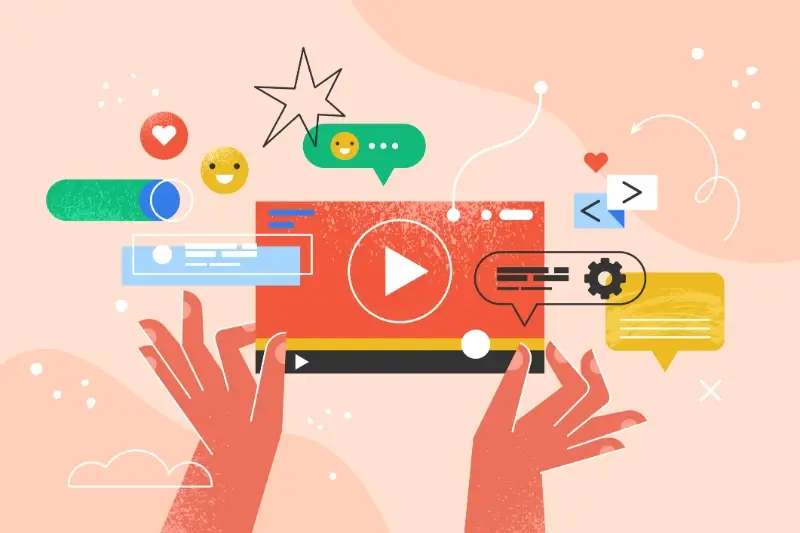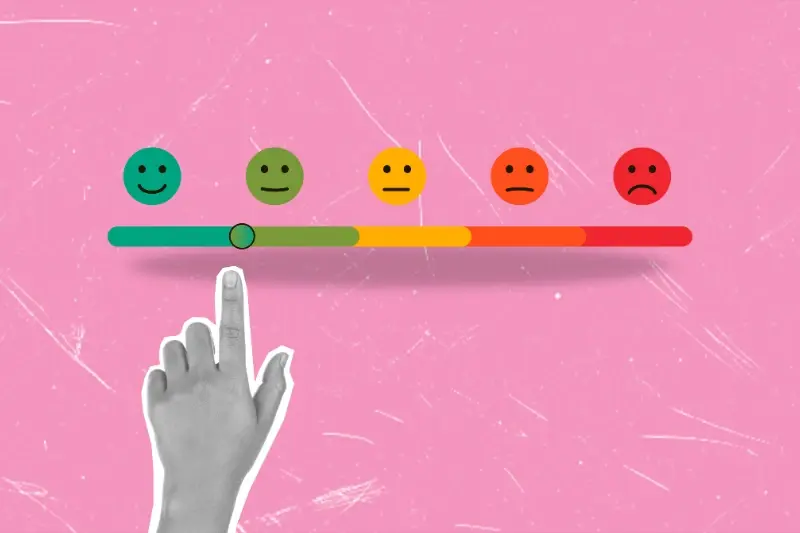Fitness App Trends 2025: What Users Really Want From Their Workout Apps
Over 90% of fitness app users abandon their workout apps within the first six months of downloading them. That's a staggering failure rate that highlights just how difficult it is to create an app that keeps people engaged with their fitness goals long-term. I've been working with fitness startups and established health brands for years, and this statistic doesn't shock me—but it should concern anyone thinking about entering the fitness app space.
The fitness app market has exploded in recent years, with thousands of options available across app stores. Yet most of them fail to understand what users actually want from their workout experience. It's not enough anymore to throw together some exercise videos and a basic timer; people expect personalised experiences that adapt to their lifestyle, preferences, and goals.
Users don't want another generic workout app—they want a fitness companion that understands their unique needs and grows with them
What makes this particularly interesting is how user preferences have shifted dramatically. People aren't just looking for exercise routines anymore; they want comprehensive wellness solutions that integrate with their daily lives. The apps that succeed understand this fundamental change and build features that address the whole person, not just their physical fitness needs.
AI-Powered Personal Training Features That Users Love
Artificial intelligence has completely transformed how people approach fitness training through mobile apps. I've watched this evolution unfold over the years—and honestly, the technology keeps getting better at understanding what each person needs from their workouts.
The most popular AI features revolve around smart workout recommendations that adapt based on your performance, fitness level, and goals. These systems track how you're progressing with exercises, note when you're struggling or excelling, then adjust future sessions accordingly. Users absolutely love this because it feels like having a personal trainer who remembers everything about their fitness journey.
Real-Time Form Correction
One feature that's gaining serious traction is AI-powered form analysis. Using your phone's camera, these apps can watch your movements during exercises and provide instant feedback on your technique. It's particularly useful for strength training where proper form prevents injuries—something that's genuinely important when you're working out alone at home.
Intelligent Recovery Planning
Smart recovery suggestions represent another breakthrough that users appreciate. The AI monitors workout intensity, frequency, and even factors like sleep data (when connected to wearables) to recommend rest days or lighter sessions. This prevents overtraining whilst keeping people motivated to maintain their fitness routines long-term.
Social Fitness Communities and Workout Sharing
Working out alone can be tough—and that's exactly why social fitness features have become so popular in recent years. Users want connection, motivation, and a bit of friendly competition to keep them moving. The most successful fitness apps now build communities right into their platforms, letting people share achievements, compare progress, and cheer each other on.
What makes these social features work? It's not just about posting a sweaty selfie after a run. The best apps create meaningful interactions through workout challenges, group goals, and real-time activity feeds. Users can follow friends, join fitness groups based on interests, and even work out together virtually. Some apps let you share specific workout routines you've created, which others can try and rate.
Popular Social Features Users Love
- Achievement sharing and progress photos
- Group challenges and competitions
- Workout routine sharing and rating
- Virtual workout buddies and accountability partners
- Community forums and fitness advice sharing
- Live workout sessions with friends
The psychology behind this is simple: people stick to fitness routines longer when they feel accountable to others. When someone comments on your morning run or joins your weekly step challenge, you're more likely to keep going.
Make privacy controls easy to find and use—not everyone wants to share everything with everyone, and giving users control over what they share builds trust.
Personalised Nutrition Integration With Exercise Plans
Gone are the days when fitness apps just counted your steps and called it a day. Users want their workout apps to understand that exercise and nutrition work together—and they want this connection to be smart, personal, and actually useful.
The magic happens when your app knows that Sarah just finished a high-intensity cardio session and automatically suggests she needs protein within the next hour to help her muscles recover. Or when it notices Tom's been doing strength training three times a week and adjusts his daily protein targets accordingly.
What Users Actually Want
From our experience building fitness apps, users don't want another generic meal plan that assumes everyone weighs 70kg and does the same workout. They want nutrition advice that changes based on what they're actually doing. If they've had a rest day, their carb intake suggestions should reflect that. If they're training for a marathon, their nutrition needs will be completely different from someone doing yoga twice a week.
Smart Integration Features That Work
- Automatic calorie adjustments based on workout intensity and duration
- Post-workout meal suggestions that match recovery needs
- Hydration reminders that increase during active days
- Macro tracking that adapts to different training phases
- Shopping lists that update based on upcoming workout plans
The best apps we've developed make this feel seamless—users barely notice the app is making these calculations behind the scenes, they just know their nutrition advice feels spot-on.
Mental Health and Mindfulness Features in Fitness Apps
Physical fitness and mental wellbeing go hand in hand—something that app developers are finally catching on to. I've noticed more clients asking about meditation features, stress tracking, and mood monitoring in their fitness apps. It's not just a nice-to-have anymore; users genuinely want apps that help them feel better mentally as well as physically.
The most popular mental health features include guided meditation sessions, breathing exercises, and sleep tracking. Some apps are getting clever with stress detection too, using heart rate data to suggest when users might need a mindfulness break. Mood journaling is another big winner—people love being able to log how they're feeling before and after workouts.
What Users Actually Use
From my experience working with fitness app clients, the features that get used most are the simple ones. Five-minute breathing exercises beat hour-long meditation courses every time. Users want something quick they can do between meetings or before bed.
Mental health support in fitness apps isn't about replacing therapy—it's about giving users tools to manage everyday stress and build healthy habits
The smartest apps integrate these features naturally into workout routines. Cool-down sessions that include mindfulness, or gentle reminders to check in with your mood. It feels less like homework and more like part of taking care of yourself.
Wearable Device Integration and Real-Time Health Tracking
The fitness tracker on your wrist isn't just a fancy watch anymore—it's become the bridge between your workout app and what's actually happening inside your body. I've watched this space evolve massively over the past few years, and the connection between wearables and fitness apps has gone from basic step counting to sophisticated health monitoring that would have seemed like science fiction not too long ago.
Modern fitness apps are pulling data from smartwatches, fitness bands, and even chest straps to give users a complete picture of their health. We're talking heart rate zones during workouts, sleep quality scores, stress levels, and recovery metrics that actually mean something. The best apps don't just collect this data—they use it to adjust your training plan automatically.
Popular Wearable Integrations
- Apple Watch and HealthKit integration for iPhone users
- Fitbit devices with comprehensive sleep and activity tracking
- Garmin watches for serious athletes and outdoor enthusiasts
- Samsung Galaxy Watch for Android ecosystem users
- Polar and Suunto devices for heart rate accuracy
What users really want is seamless syncing without having to think about it. They put on their watch, do their workout, and expect their app to understand whether they pushed too hard or if they're ready for more. The apps that nail this integration—where your wearable data actually influences your next workout recommendation—those are the ones keeping users engaged long-term.
Gamification Elements That Keep Users Coming Back
Gamification has become one of the most powerful ways to keep fitness app users engaged—and I've seen this work brilliantly across countless projects. The trick isn't just throwing badges and points at everything; it's about understanding what actually motivates people to stick with their fitness goals.
Achievement systems work best when they celebrate real progress, not just app usage. Users love earning badges for completing their first 5K, hitting personal records, or maintaining workout streaks. Points systems can drive daily engagement, but they need to feel meaningful—linking directly to fitness milestones rather than arbitrary actions.
Popular Gamification Features
- Streak counters for consecutive workout days
- Level progression based on fitness achievements
- Leaderboards comparing performance with friends
- Challenge competitions with time-limited goals
- Virtual rewards like new workout content or avatar customisation
Social challenges create particularly strong engagement—users competing with friends or joining community challenges stay active much longer than solo users. The competitive element taps into natural motivation whilst building connections with other fitness enthusiasts.
Make sure your gamification elements align with actual fitness progress. Empty achievements feel hollow and users will see right through them.
The most successful fitness apps balance competition with personal growth, giving users multiple ways to feel accomplished whether they're beginners or fitness veterans.
Offline Workout Capabilities and Flexible Exercise Options
I've seen countless fitness apps come and go over the years, and one thing that consistently frustrates users is when their workout gets interrupted by poor signal or dead WiFi. Nothing kills motivation quite like a spinning loading wheel when you're ready to exercise! That's why offline workout capabilities have become absolutely non-negotiable for modern fitness apps.
Users want to download their favourite workout videos, exercise routines, and training programmes directly to their device. No buffering, no data worries, no excuses. The best fitness apps now offer comprehensive offline libraries that sync automatically when you're connected, then work seamlessly when you're not.
What Users Expect From Flexible Exercise Options
Flexibility means different things to different people. Some days you've got an hour for a full workout; other days you've got ten minutes between meetings. Smart fitness apps recognise this reality and adapt accordingly.
- Quick 5-15 minute express workouts for busy schedules
- Customisable workout lengths that can be adjusted mid-session
- Equipment-free bodyweight options for any location
- Multiple difficulty levels within the same exercise type
- Pause and resume functionality that actually works properly
The apps that get this right understand that life is unpredictable—your fitness app shouldn't add to the chaos, it should work around it. When users can exercise anytime, anywhere, without technical barriers, they're far more likely to stick with their fitness goals long-term.
Conclusion
After working with fitness apps for years, I can tell you that users have become incredibly smart about what they want from their workout apps. They're no longer satisfied with basic step counters or generic exercise videos—they want apps that actually understand them and adapt to their lives.
The trends we've explored show that people want their fitness apps to be like having a personal trainer, nutritionist, and workout buddy all rolled into one. AI-powered features that learn from your habits; social communities that keep you motivated; nutrition plans that work with your exercise routine; mental health support that recognises fitness isn't just about physical strength. These aren't just nice-to-have features anymore—they're what users expect.
What really strikes me is how these user preferences point towards apps that work around people's real lives. Offline capabilities for when you're in a dead zone; wearable integration so you don't need to fumble with your phone mid-workout; gamification that makes exercise feel less like a chore. Users want flexibility, personalisation, and apps that actually make their fitness journey easier, not more complicated.
If you're building a fitness app, listen to what users are telling us through these trends. They want technology that serves them, not the other way around.
Share this
Subscribe To Our Blog
You May Also Like
These Related Stories

Entertainment App Trends 2025: What Users Want From Their Media Apps

Why User Feedback Is Your App's Best Friend (and How to Make the Most of It)





